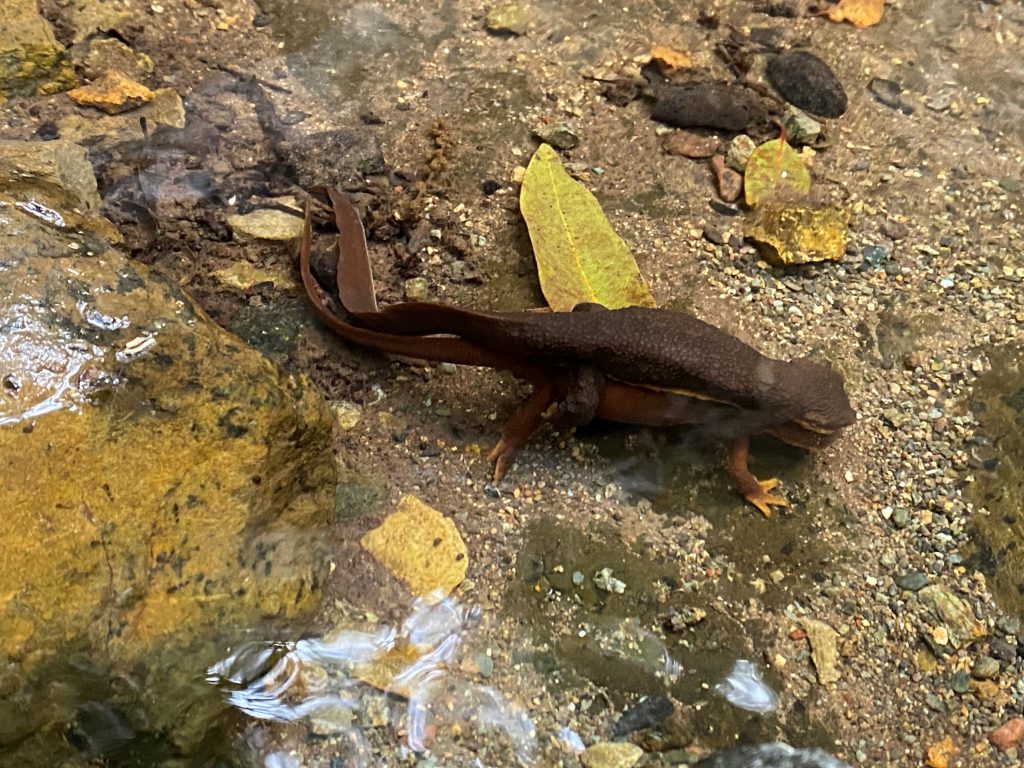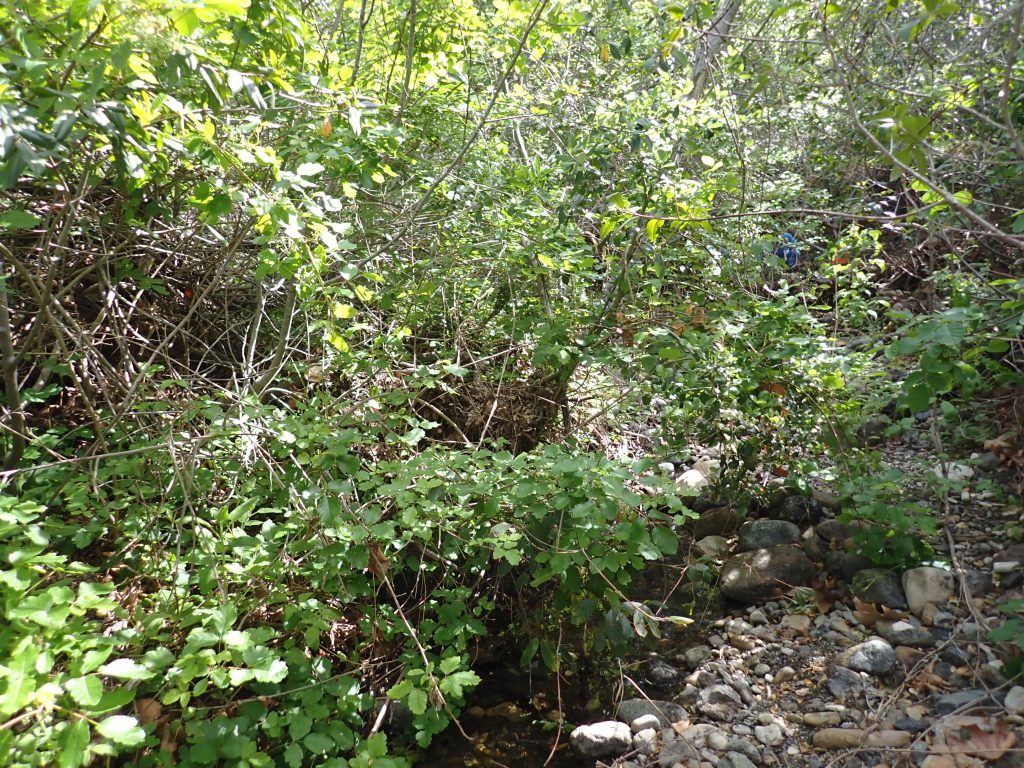It’s bioassessment time!
Each spring, the Estuary Program heads out to ten creeks sites throughout the Morro Bay watershed to conduct bioassessment surveys. These surveys help us better understand creek conditions. We measure things like the size of rocks on the creek bottom and the amount of water in the creek. We also collect benthic macroinvertebrate samples from each survey location.
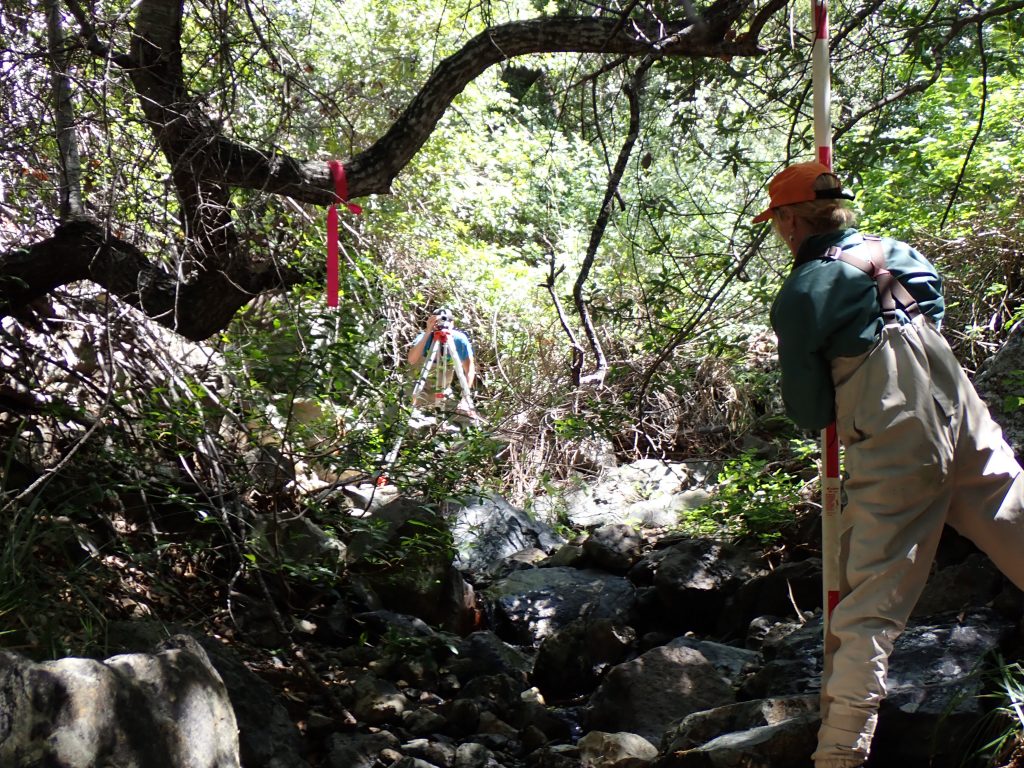
Macroinvertebrates indicate creek conditions
Benthic macroinvertebrates, or simply BMIs, are bottom-dwelling insects or insect larvae that can be seen with the naked eye. BMIs are a tool to assess creek conditions, since the variety and abundance of certain species can be a reliable indicator of water quality and habitat conditions.
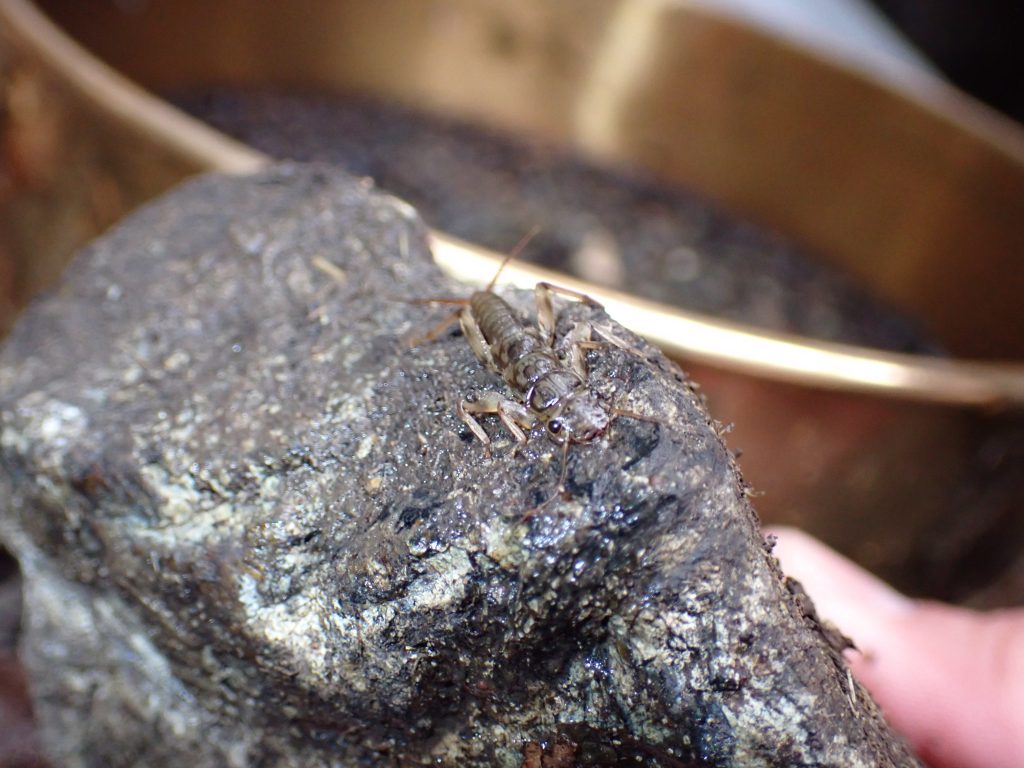
Each year the Estuary Program collects BMI data for comparison to a dataset that spans back to the early 1990s. This long-running dataset helps provide insight on how watershed conditions are changing over time.
2022 season recap
This year’s bioassessment season was completed primarily by Estuary Program monitoring staff with additional support from the students of Cal Poly’s Natural Resources Management Program and the AmeriCorps Watershed Stewards Program (WSP). Our collaborative team was able to complete ten surveys, including three on the mainstem of Chorro Creek and seven along Chorro Creek tributaries. Due to access limitations, no surveys were conducted in the Los Osos Creek subwatershed.
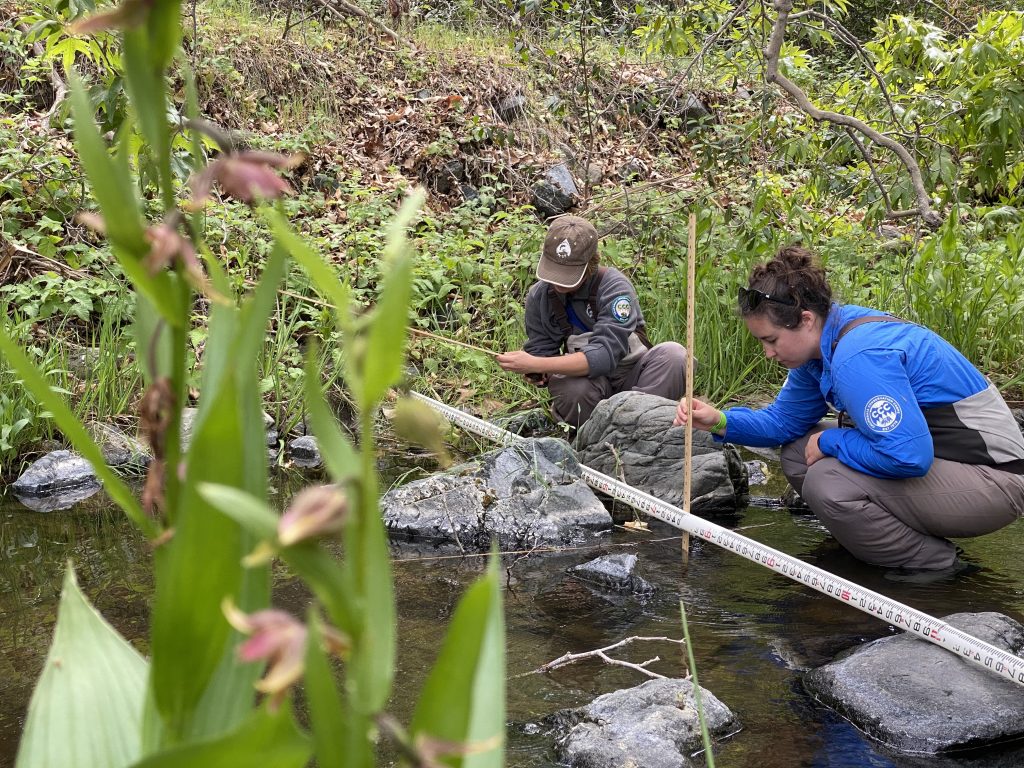
Spring surveys kicked off in early April and were completed by the first week of May. During dry years, surveys have to happen early before creeks go dry. For more information on how we choose our sites for the year, check out this blog post on preparing for the 2022 season.
Life in our creeks
One of the most exciting parts of bioassessment monitoring is all of the wildlife we encounter. Each year, our survey teams find a variety of local wildlife including invertebrates, lizards, snakes, and fish. Occasionally our crews might also find small mammals or tracks of larger mammals who use the creek as a source of food and water.
A few of this year’s sightings included the southern alligator lizard (Elgaria multicarinata), coast range fence lizard (Sceloporus occidentalis), and valley garter snake (Thamnophis sirtalis). Staff also spotted a number of mating California newts (Taricha torosa) this season.
During this year’s survey effort, staff encountered mating newts
Poison oak galore
All fieldwork comes with certain inherent risks. One of the most prevalent hazards in riparian areas is poison oak. This sneaky three-leafed plant is notorious for causing rashes and irritation and is a common sight throughout our watershed.
This photo shows a dense cover of poison oak at a bioassessment site on Dairy Creek. Staff were able to collect all necessary data while avoiding this hazard.
The most reliable way to prevent poison oak contact is to physically cover ourselves head-to-toe to prevent any plant-to-skin contact. Full-body coveralls can be highly effective poison oak PPE, especially when combined with gloves and safety glasses. Our survey crew sported this look for our Dairy Creek survey, and we’re proud to say that everyone came out unscathed!
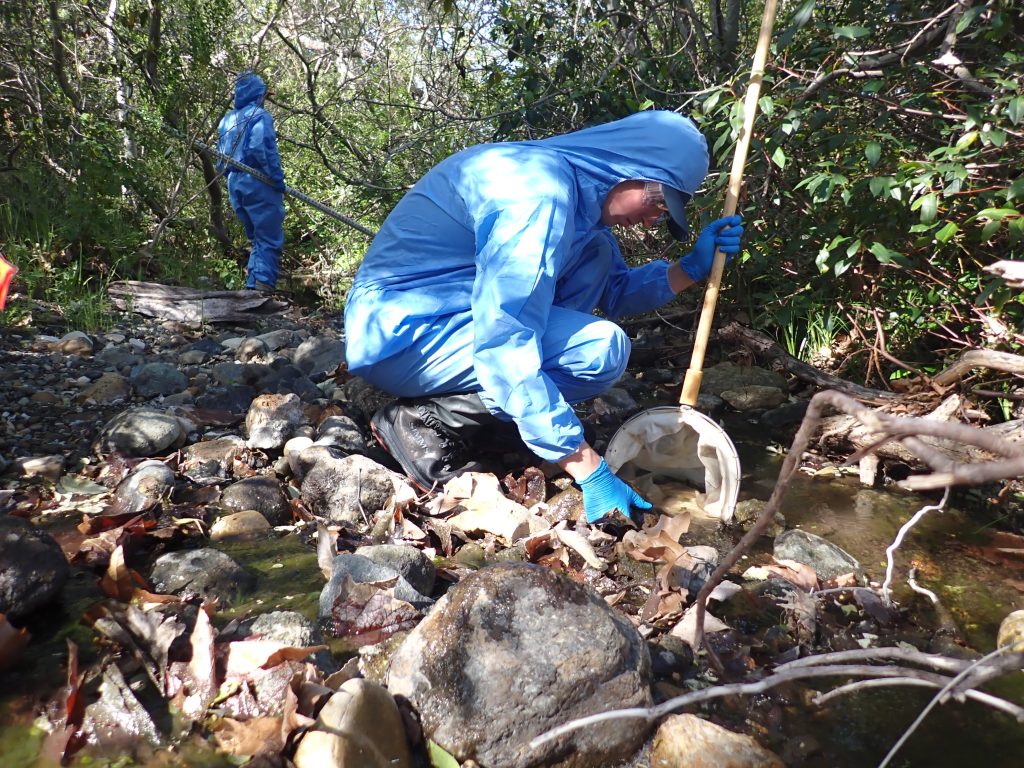
Bugs to the lab!
Now that our spring surveys are completed, all of our bug samples have been sent to a certified taxonomy lab for sorting and identification. In a few months’ time, the lab will send us a file with the results from our macroinvertebrate sampling.
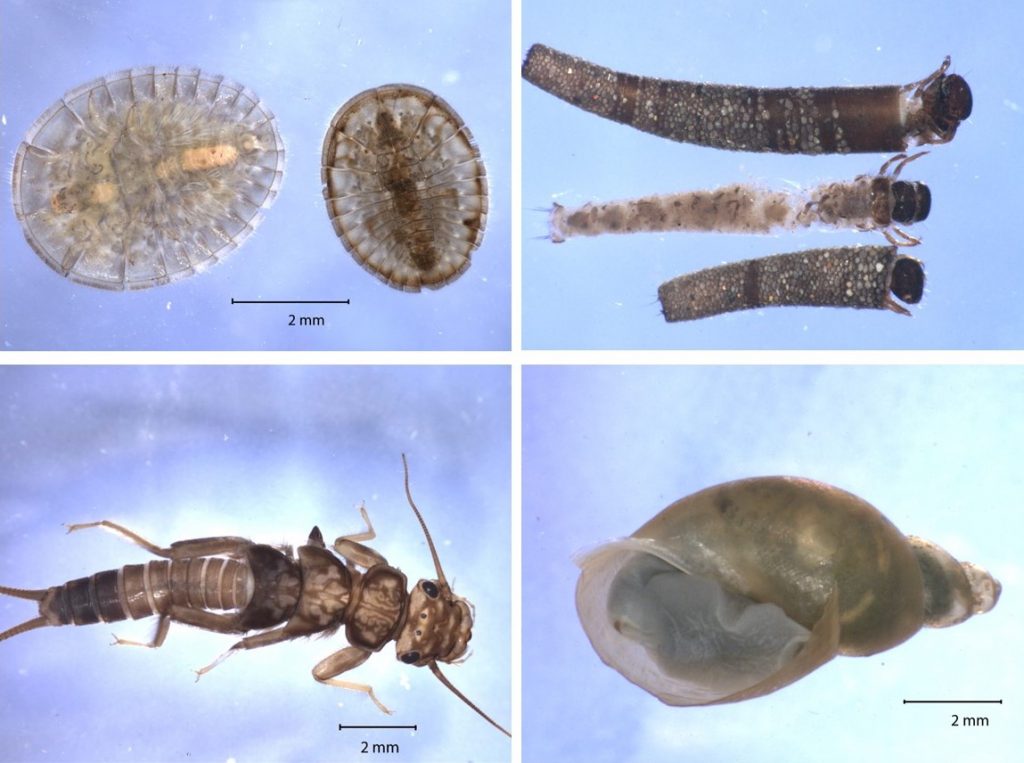
We are excited to share the results of our 2022 season when we hear back from the lab later this summer.
Thank you to the Harold J. Miossi Charitable Trust
This monitoring effort is made possible by a grant from the Harold J. Miossi Charitable Trust, which has supported the project for nearly ten years. The Miossi Trust is responsible for contributing over $100,000 since 2013, and their generous support makes possible this valuable long-running dataset. The Trust has already pledged funding for our bioassessment efforts in 2023 and 2024.
Help us protect and restore the Morro Bay estuary!
- Donate to the Estuary Program today and support our work in the field, the lab, and beyond.
The Estuary Program is a 501(c)3 nonprofit. We depend on funding from grants and generous donors to continue our work. - Support us by purchasing estuary-themed gear from ESTERO. This locally owned and operated company donates 20% of proceeds from its Estuary clothing line and 100% of Estuary decal proceeds to the Estuary Program. Thank you, ESTERO!
- Purchase items from the the Estuary Program’s store on Zazzle. Zazzle prints and ships your items, and the Estuary Program receives 10% of the proceeds. Choose from mugs, hats, t-shirts, and even fanny packs (they’re back!) with our fun Estuary Octopus design or our Mutts for the Bay logo.
Thank you for helping our beautiful, bountiful, biodiverse bay!
